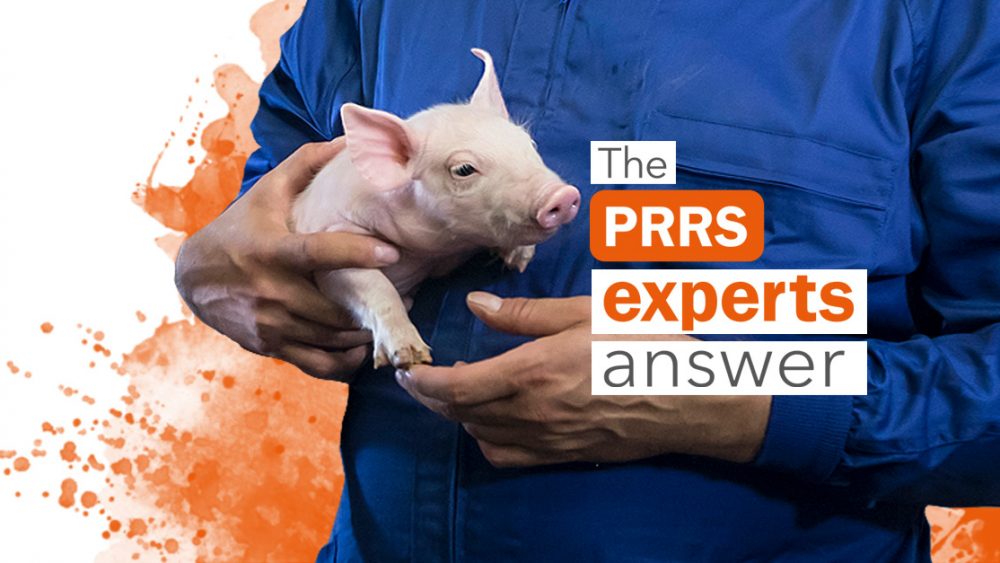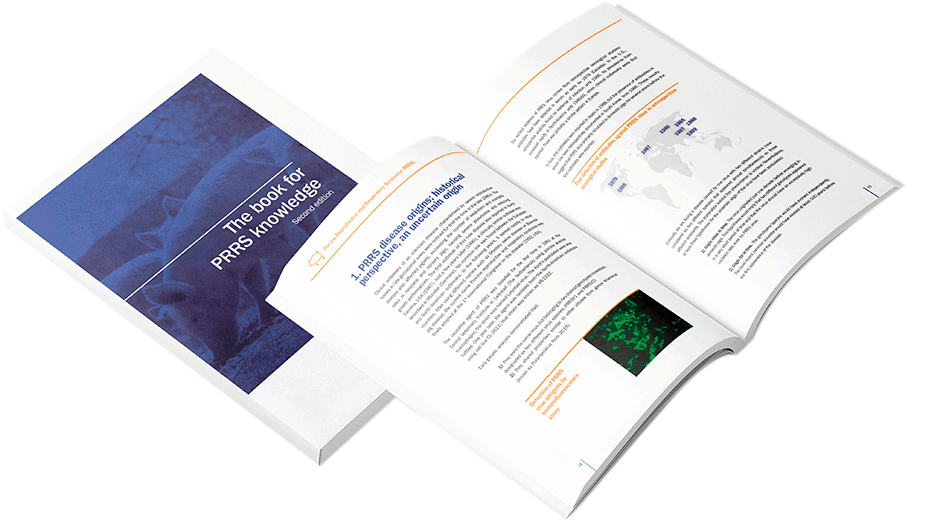Vaccines are not dosed in the same way as antibiotics.
A vaccine dose does NOT depend on body weight: The mechanism of action of vaccines is different to that of antibiotics and, as a result, the dose does not depend on the body weight of the target animal.
A vaccine does not have to be distributed throughout the body and the vaccine components (antigen and adjuvant) do not act directly on the pathogen.
The activity of vaccines, for instance PRRS virus vaccines, starts at the inoculation site itself by means of a rapid and local innate response. As a result of this phase, antigen-presenting cells are activated (dendritic cells and/or macrophages) that are responsible for processing the antigen and carrying it to the closest lymph nodes where they activate specific T and B lymphocytes, thereby starting the acquired immune response.
In a second phase, effector T cells and B plasma cells are generated that produce cytokines and antibodies respectively, ensuring a concentration in the blood and tissues that is independent of the age/weight of the animal for the same dose of vaccine.
Does the same thing happen with human vaccines?
In human medicine, the vaccines that are used in children (paediatric vaccines) and in adults are the same and are used in the same dose. It would not occur to anyone to reduce a vaccine dose for children because of the risk of inadequate protection that this would entail. There are examples of toxoids (tetanus), inactivated vaccines (rabies) and live vaccines (varicella) where the dose is the same for children as for adults.
How is a vaccine dose determined?
The dose that is indicated in the leaflet for each vaccine is the one that has been shown to be effective during the different research phases in the target animal species and with the minimum age that can be vaccinated. On the basis of these studies, the health authorities in each country recommend the specified dose for each product. Regarding PRRS virus vaccines, the dose indicated in the leaflet is defined by a range between minimum and maximum effective concentration dose. For this reason, the dose should be administered irrespective of the age of the animal.
There are some old products that have different doses for different age groups, but this would not be allowed nowadays.
Which problems can you have when using a PRRS vaccine dose lower than the recommended one?
Administration of a vaccine dose lower than the recommended one can result in a lower immune response, compromising the protection against the PRRS virus. In other words, we are able to guarantee that using a complete dose of UNISTRAIN® PRRS each animal is going to receive the protective titre of our MLV PRRS vaccine.
Some of the threats of not using full dose might be having non-protected subpopulations of animals in the herd, immunity generated is not enough to overcome the infection pressure of the farm, shorter duration of immunity, increase of co-infections facilitated by the lack of PRRS control, among others.
HIPRA © All rights reserved




